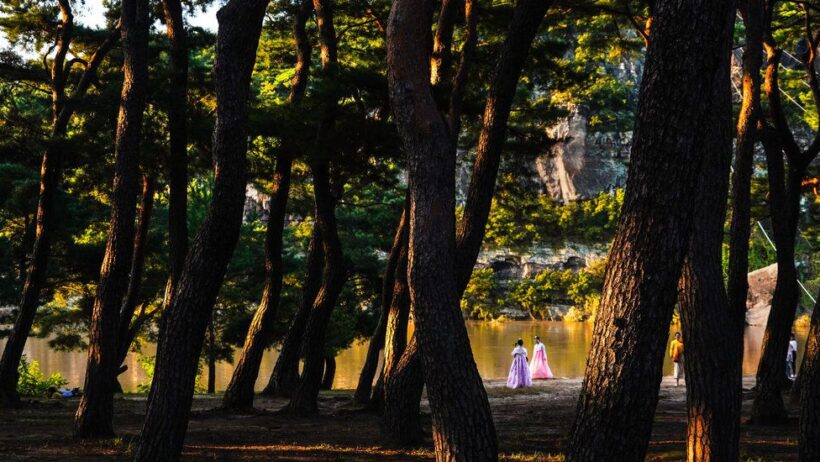Korea, often referred to as “The Land of Morning Calm,” boasts a climate that is as dynamic as its rich cultural heritage. The geographical location, unique topography, and prevailing climatic systems contribute to a fascinating weather pattern that encapsulates all four seasons. But have you ever pondered how these seasonal changes influence not only the environment but also daily life, agriculture, and even tourism in this beautiful peninsula?
The four distinct seasons—spring, summer, autumn, and winter—each collate their own charm, presenting both challenges and opportunities. Understanding the climate of Korea requires a nuanced examination of these seasons and their corresponding weather phenomena.
Spring: A Resplendent Awakening
As winter relinquishes its grip, spring emerges with a soft embrace around late March to early June. This season is characterized by mild temperatures, gradually warming from 10°C (50°F) to around 20°C (68°F). The rejuvenation of flora happens in a spectacular fashion; cherry blossoms and other vibrant flowers bloom, creating picturesque landscapes famous across the globe.
However, spring also poses a challenge. The seasonal transformation leads to a rise in fine dust and air pollution, mostly stemming from industrial activities and high vehicle emissions, exacerbated by weather patterns that trap pollutants. Furthermore, spring brings along fluctuations in weather, which can lead to unexpected rains or even late cold snaps. These variations can impact agricultural practices, particularly for crops sensitive to temperature changes.
Summer: A Season of Heat and Humidity
Summer in Korea, spanning June to August, is typically characterized by high humidity and rising temperatures, often exceeding 30°C (86°F). This period is punctuated by the monsoon season, during which torrential rains occur, significantly affecting the water supply for both urban areas and farmland.
The heat and humidity can present significant discomfort for residents, making air conditioning a necessity in urban settings. Interestingly, while summer offers an abundance of outdoor activities, the intensity of rains can lead to flash flooding and landslides, causing considerable disruption and posing risks to both life and property.
Despite these challenges, the summer season provides an excellent opportunity for eco-tourism. Activities like mountain hiking, beach outings, and various summer festivals attract both locals and tourists, which can lead to increased environmental awareness and conservation initiatives.
Autumn: Nature’s Color Palette
As summer ebbs into autumn from September to November, the climate begins to cool, allowing for idyllic weather that hovers around 15°C to 25°C (59°F to 77°F). Autumn captivates with its spectacular foliage, as leaves transition into a kaleidoscope of reds, oranges, and yellows. This season signifies a period of harvest, enriching Korea’s agricultural output.
However, the transition into cooler months also brings with it the risk of typhoons, which can result in severe weather conditions. The interface between cool and warm air can create tumultuous storms, causing havoc in coastal regions and affecting everyday life. With environmental sustainability becoming a pressing concern, communities are challenged to formulate strategies to mitigate the impacts of such natural disasters.
Winter: The Silent Stillness
Winter, lasting from December to February, envelops Korea in a serene silence as temperatures plunge, often reaching around -10°C (14°F) in the colder northern regions and slightly milder in the south. The landscape transforms, blanketed by snow, which brings joy to winter sports enthusiasts and attracts tourists eager for skiing adventures.
Nonetheless, winter presents its own environmental challenges. The demand for heating increases, leading to higher energy consumption. This creates a pressing dilemma: how to ensure adequate heating while minimizing carbon emissions. Additionally, considerable snowfall can result in transportation difficulties, as cities grapple with maintaining roadways and public transportation systems.
The stark beauty of winter might be captivating, but it underscores the necessity for robust infrastructure to adapt to climatic shifts and ensure public safety. Additionally, wildlife experiences seasonal stressors, with some species struggling to adapt to the changing temperatures.
Conclusion: Embracing a Climate-Conscious Future
As the seasons in Korea intertwine, it becomes evident that the climate presents both enchanting experiences and complex challenges. Engaging with these dynamic seasonal cycles encourages innovative thinking about environmental conservation and sustainable living practices. What can be done to mitigate the adverse effects while cherishing the beauty of each season? This lingering inquiry is imperative. The interplay between nature and human activity emphasizes the need for collective responsibility in safeguarding the environment.
Ultimately, Korea’s climate offers a compelling juxtaposition of resilience and fragility. The beauty of the four seasons captivates the imagination, while the underlying challenges provoke action. As people navigate through these seasons, there emerges a shared responsibility to foster a sustainable coexistence with nature, focusing on environmental stewardship for future generations.








